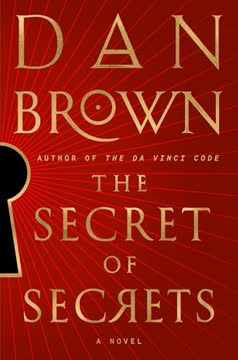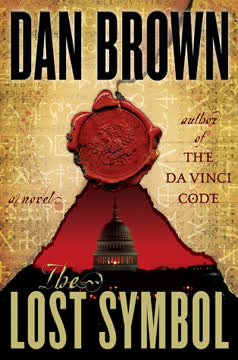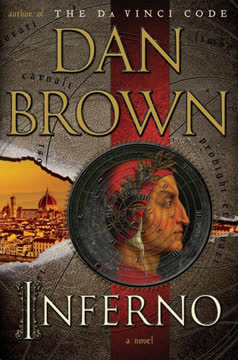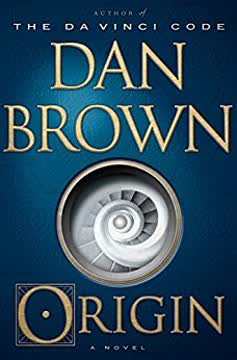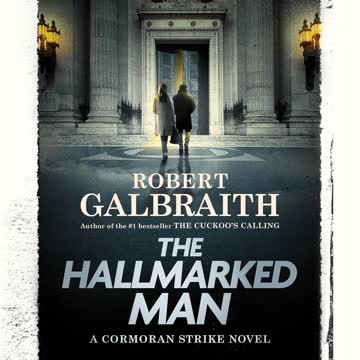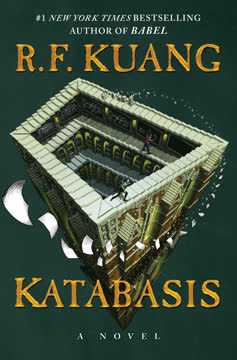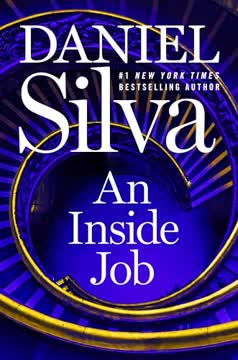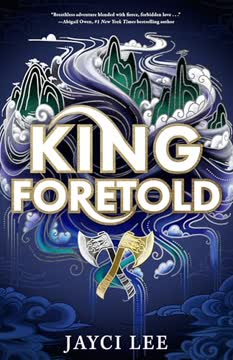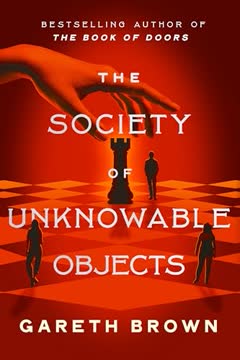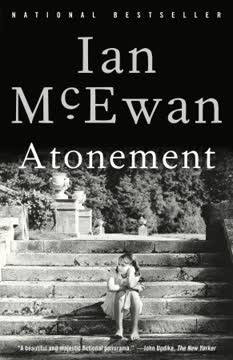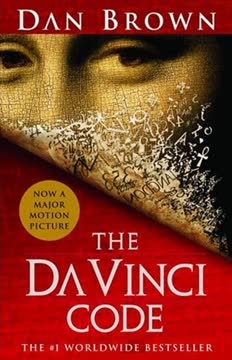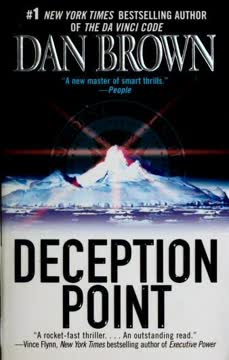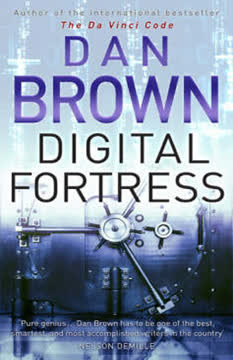Plot Summary
Prologue: Out-of-Body Terror
Dr. Brigita Gessner, a renowned Czech neuroscientist, experiences a terrifying out-of-body episode above Prague, convinced she is dying. She recalls being tortured by a monstrous, clay-masked figure—the Golem—who demands she confess the secrets of a clandestine project beneath the city. As her consciousness drifts, Gessner realizes she is the victim of her own creation, and her final thoughts are of warning her colleagues. The prologue sets a chilling tone, blending science, mysticism, and the terror of mortality, while foreshadowing the collision of ancient legend and cutting-edge neuroscience that will drive the story.
Prague Awakening
Harvard symbologist Robert Langdon awakens in Prague, savoring a rare romantic morning with Dr. Katherine Solomon, a brilliant noetic scientist. Their relationship, long platonic, has blossomed during this trip. Katherine's lecture on consciousness has electrified Prague's academic elite, challenging the notion that the mind is confined to the brain. As they bask in newfound intimacy, the city's beauty and history seem to promise magic, but a sense of unease lingers—Katherine is scheduled to meet Gessner, and the city's undercurrents of mysticism and surveillance hint at dangers to come.
The Golem's Vow
The Golem, a hulking, clay-masked figure, stalks Prague's snowy streets, haunted by his duty to protect a woman he loves from afar. After extracting Gessner's confession, he resolves to destroy the "house of horrors" beneath the city. His identity is shrouded in mystery, but his actions are driven by a twisted sense of justice and self-sacrifice. Meanwhile, in London, a shadowy operative named Finch grows anxious over Gessner's silence, signaling that powerful forces are converging on Prague, and that the secrets buried there are worth killing for.
Noetic Science Unveiled
Katherine's lecture at Prague Castle dazzles the audience, positing that consciousness is not created by the brain but exists beyond it—a radical idea that unsettles both scientists and spiritualists. Langdon, drawn into the discussion, connects ancient symbols like the halo to the quest for enlightenment. The narrative explores the tension between materialist science and noetic theory, setting up the central conflict: if the mind is not bound by the body, what are the implications for life, death, and the soul? The seeds of controversy and danger are sown as Katherine hints at a paradigm-shifting discovery in her forthcoming book.
Nightmare on Charles Bridge
After a night of disturbing dreams, Langdon witnesses a woman in a spiked halo and black robes—eerily matching Katherine's nightmare—crossing Charles Bridge, carrying a silver spear and exuding the stench of death. Panicked, he triggers a hotel evacuation, convinced a disaster is imminent. The event blurs the line between dream and reality, as Langdon grapples with the possibility of precognition or manipulation. The city's mystical reputation intensifies the sense of unreality, and the incident marks the beginning of a relentless pursuit, with Langdon and Katherine drawn into a web of prophecy, paranoia, and mortal danger.
The Bomb and the Bridge
Langdon's alarm proves prescient: a bomb is discovered and defused at the hotel, but his foreknowledge draws the suspicion of Czech intelligence. Interrogated by Captain Janáček, Langdon struggles to explain his actions, while Katherine's absence deepens his anxiety. The authorities suspect a publicity stunt for Katherine's controversial book, and the couple becomes entangled in a bureaucratic and existential nightmare. The narrative tightens as the protagonists are forced to question their own perceptions, the reliability of dreams, and the possibility that someone is orchestrating events to discredit or destroy them.
The Manuscript Vanishes
In New York, editor Jonas Faukman discovers that Katherine's manuscript and all related files have been deleted from Penguin Random House's servers in a sophisticated cyberattack. Simultaneously, operatives in London and Prague move to contain the threat posed by Katherine's research. The theft and destruction of the book signal that her ideas are not merely academic—they threaten powerful interests. The stakes escalate as Faukman is abducted, and the narrative expands to reveal a shadowy network willing to kill to suppress the truth about consciousness and the mind's untapped potential.
Precognition and Paranoia
Langdon and Katherine, now fugitives, piece together the uncanny parallels between Katherine's nightmare and real events. Katherine recalls experiments demonstrating that the brain can react to stimuli before they occur, suggesting the mind may create or sense reality in ways science cannot explain. The couple suspects their suite was bugged, and that their dreams are being used against them. The tension between skepticism and belief intensifies, as they realize they are pawns in a psychological operation designed to destabilize and discredit them, while the true nature of the threat remains hidden.
The Hunt Begins
As Langdon and Katherine attempt to regroup, they are pursued by Czech intelligence, the CIA, and the enigmatic Golem. Allies become uncertain, and betrayal lurks everywhere. The narrative weaves through Prague's labyrinthine streets, secret passages, and historical sites, blending the city's occult past with modern surveillance. The protagonists' only hope lies in deciphering the clues left by Gessner and understanding the true significance of Katherine's research. The sense of claustrophobia and paranoia mounts, as the couple races to stay one step ahead of their relentless pursuers.
The Bastion's Secret
The trail leads Langdon and Katherine to Crucifix Bastion, Gessner's private lab perched above the city. Here, they discover evidence of illegal brain experiments, advanced neurotechnology, and a hidden elevator that descends far below the surface. The bastion is revealed as a front for a much larger operation—Threshold—a clandestine facility built in the ruins of a Soviet-era bomb shelter. The narrative shifts from historical intrigue to techno-thriller, as the protagonists realize they are on the verge of uncovering a secret that could redefine humanity's understanding of life, death, and consciousness.
The Puzzle of PSI
Langdon's expertise in symbology becomes crucial as he deciphers Gessner's encrypted passcodes, rooted in ancient Greek, Latin, and mathematical symbolism. The narrative explores the intersection of language, numbers, and the mind, drawing connections between historical puzzles and modern encryption. The protagonists' journey becomes a race against time, as they must solve increasingly complex riddles to access Threshold and expose the truth. The tension between logic and intuition, science and mysticism, is embodied in the codes that guard the facility's deepest secrets.
The Golem's Confession
The Golem's true identity is gradually unveiled: he is not a supernatural monster, but a deeply traumatized individual with dissociative identity disorder, created by years of abuse and medical experimentation. His mission is both personal and universal—avenging the wrongs done to himself and others, and ensuring that the truth about Threshold is revealed. Through a harrowing video confession extracted from Gessner, the full extent of the facility's crimes is exposed: non-consensual brain implants, forced near-death experiences, and the weaponization of consciousness. The Golem's sacrifice becomes the catalyst for the story's climax.
The Threshold Facility
Langdon and Katherine penetrate Threshold, discovering a futuristic complex dedicated to the study and manipulation of consciousness. They find evidence of advanced brain implants, immersive virtual reality, and a "death lab" where subjects are suspended on the brink of death to induce out-of-body experiences. The facility's true purpose is revealed: to create a new form of remote viewing, enabling the CIA to spy on anyone, anywhere, by detaching consciousness from the body. The narrative reaches its most surreal and disturbing heights, as the protagonists confront the ethical and existential implications of this technology.
The Death Lab
In the heart of Threshold, Langdon and Katherine witness the culmination of decades of secret research: a system that records and pilots the experiences of "psychonauts" as they die and leave their bodies. The CIA's goal is to weaponize nonlocal consciousness, creating undetectable "drones" of the mind. The story grapples with the meaning of death, the possibility of life after death, and the dangers of reducing the soul to a tool of espionage. The protagonists must decide whether to destroy the facility or risk its power falling into the wrong hands.
The CIA's Shadow
The narrative shifts to the highest levels of the CIA, where Director Judd and operative Finch debate the ethics and necessity of Threshold. The agency's history of psychic research, from Stargate to the present, is revealed as a tapestry of ambition, fear, and moral compromise. The ambassador, Heide Nagel, becomes a pivotal figure, torn between loyalty to her country and her conscience. The story interrogates the limits of national security, the dangers of unchecked power, and the possibility of redemption through truth and accountability.
The Truth in the Brain
Katherine's research, long dismissed as fringe science, is vindicated: consciousness is nonlocal, the brain is a receiver, and death is a transition, not an end. The CIA's theft of her ideas and the abuse of vulnerable subjects are exposed through Gessner's confession and the living evidence of Sasha Vesna. The narrative resolves the central mystery: the mind's true power lies not in domination or surveillance, but in connection, empathy, and the courage to face the unknown. The story's emotional arc culminates in forgiveness, healing, and the promise of a new paradigm.
The Golem's Sacrifice
The Golem, revealed as Sasha's alter, sacrifices himself to destroy Threshold, ensuring that the truth cannot be buried. His final acts are driven by love, loyalty, and the desire to free Sasha from the cycle of abuse. The explosion of the facility is both literal and symbolic—a cleansing of the past and a chance for rebirth. The narrative honors the resilience of the human spirit, the possibility of transformation, and the enduring power of myth to shape and heal the psyche.
Asylum and Aftermath
In the aftermath, the ambassador arranges asylum for Sasha, ensuring her safety and the protection of the evidence against the CIA. Langdon and Katherine, their love deepened by ordeal, prepare to return home, carrying with them the manuscript that survived against all odds. The story ends with hope: the promise of scientific and spiritual revolution, the healing of old wounds, and the enduring quest to understand the secret of secrets—the nature of consciousness, death, and what lies beyond.
Characters
Robert Langdon
Langdon, a Harvard symbologist, is thrust into a world where ancient myth collides with modern science. His relationship with Katherine Solomon evolves from friendship to deep love, providing emotional ballast amid chaos. Langdon's skepticism is tested as he confronts phenomena that defy materialist explanation, forcing him to reconcile logic with intuition. His eidetic memory and expertise in codes are crucial, but his true growth lies in embracing uncertainty and the possibility of realities beyond the physical. Langdon's journey is one of humility, courage, and the willingness to risk everything for truth and love.
Katherine Solomon
Katherine is a pioneering noeticist whose research challenges the boundaries of mind and matter. Her intellect is matched by vulnerability—haunted by past trauma, professional skepticism, and the loss of her life's work. Katherine's emotional arc is one of vindication and forgiveness: she confronts betrayal by the scientific establishment and the CIA, but ultimately finds strength in her discoveries and her relationship with Langdon. Her compassion extends to Sasha, recognizing the shared wounds of abuse and the need for healing. Katherine embodies the story's central theme: the mind's power to transcend, connect, and transform.
Sasha Vesna / The Golem / Dmitri Sysevich
Sasha, a Russian epileptic and survivor of institutional abuse, develops dissociative identity disorder, manifesting as the Golem—a protector and instrument of vengeance. The Golem's actions are both monstrous and redemptive, driven by love for Sasha and outrage at her exploitation. The alter's journey is one of self-sacrifice, culminating in the destruction of Threshold and the liberation of Sasha's true self. The character's arc explores the psychology of trauma, the resilience of the human spirit, and the blurred line between victim and avenger. The Golem's mythic identity is both a mask and a means of survival.
Dr. Brigita Gessner
Gessner is a renowned neuroscientist whose ambition and moral blindness lead her to collaborate with the CIA's darkest experiments. Her relationship with Sasha is complex—part mentor, part exploiter. Gessner's ultimate fate is a consequence of her choices: tortured by the Golem, she confesses the crimes of Threshold, providing the evidence needed to expose the truth. Her character embodies the dangers of unchecked scientific curiosity and the ethical perils of serving power over humanity.
Everett Finch
Finch is the mastermind behind Threshold, a CIA operative whose devotion to national security justifies any means. He is both puppet master and pawn, ultimately undone by the very forces he unleashes. Finch's psychological profile is one of compartmentalization, rationalization, and the gradual erosion of conscience. His interactions with Langdon, Katherine, and the Golem reveal the limits of control and the inevitability of reckoning. Finch's arc is a cautionary tale about the costs of secrecy and the hubris of playing god with the mind.
Heide Nagel
The U.S. ambassador to Prague, Nagel is a former CIA attorney caught between loyalty to her country and her conscience. Her journey is one of awakening and redemption: manipulated into facilitating Threshold, she ultimately becomes the protector of Sasha and the whistleblower who ensures the truth is not buried. Nagel's psychological depth lies in her capacity for self-reflection, guilt, and the courage to act against her own interests for the greater good. She represents the possibility of institutional change and the power of individual agency.
Jonas Faukman
Faukman, Katherine's editor, is the everyman caught in the crossfire of global intrigue. His abduction and resourcefulness provide a grounded counterpoint to the story's high-stakes drama. Faukman's loyalty, humor, and persistence are vital in preserving the manuscript and supporting Langdon and Katherine. His arc is one of transformation from passive observer to active participant in the quest for truth.
Captain Janáček / Lieutenant Pavel
The Czech intelligence officers represent the ambiguities of law enforcement in a world of shifting allegiances. Janáček's zeal and eventual downfall highlight the dangers of pride and the ease with which justice can be subverted. Pavel's loyalty and disillusionment mirror the story's larger themes of betrayal and the search for meaning in a world where the lines between right and wrong are blurred.
Michael Harris
Harris, the embassy attaché, is coerced into surveilling Sasha, only to fall genuinely in love with her. His internal conflict and ultimate death underscore the human cost of espionage and the impossibility of compartmentalizing emotion. Harris's arc is one of guilt, longing, and the hope for redemption through love.
Dana Daněk
The embassy's PR liaison, Dana is drawn into the story's vortex through her relationship with Harris and her role in tracking Sasha. Her arc is one of awakening, loss, and the possibility of new beginnings. Dana's resilience and adaptability suggest the story's faith in the next generation's capacity to learn from the past.
Plot Devices
Dual Narrative Structure and Symbolic Parallels
The novel employs a dual narrative structure, alternating between Langdon/Katherine's quest and the Golem's journey, gradually revealing their convergence. The structure mirrors the story's thematic dualities: science and mysticism, body and mind, victim and avenger. Symbolism is omnipresent—halos, golems, doors with seven locks—serving as both literal puzzles and metaphors for the mind's mysteries. Foreshadowing is deftly used: dreams predict reality, and historical legends prefigure modern horrors. The use of codes, ciphers, and riddles not only propels the plot but also embodies the epistemological challenge at the heart of the book: the search for truth in a world of secrets and illusions.
Analysis
The Secret of Secrets is Dan Brown's most ambitious and emotionally resonant work, fusing the pulse of a thriller with the depth of a philosophical inquiry. At its core, the novel interrogates the nature of consciousness: is the mind a product of the brain, or a receiver of a universal field? Through the intertwined journeys of Langdon, Katherine, and Sasha, the story explores the consequences—personal, political, and spiritual—of seeking to control or liberate the mind. The narrative is a meditation on trauma and healing, showing how the psyche fragments to survive, and how myth can both mask and reveal truth. The book's critique of institutional power—whether scientific, governmental, or religious—is balanced by a faith in individual agency, forgiveness, and the possibility of redemption. Ultimately, Brown suggests that the greatest secret is not a code to be broken, but a reality to be embraced: that death is not the end, consciousness is not confined, and the mind's true power lies in connection, empathy, and the courage to face the unknown. The novel's lessons are urgent for a world grappling with the ethical frontiers of technology, the legacy of trauma, and the perennial quest to understand what it means to be alive.
Last updated:
Review Summary
The Secret of Secrets receives mixed reviews, with some praising its thrilling plot and exploration of consciousness, while others criticize its repetitive formula and pseudoscientific elements. Set in Prague, the novel follows Robert Langdon and Katherine Solomon as they unravel mysteries involving noetic science and ancient mythology. Fans appreciate Brown's fast-paced storytelling and intricate puzzles, but critics find the writing clumsy and the plot predictable. Despite divided opinions, many readers still find the book entertaining and eagerly anticipate Brown's works.
Robert Langdon Series
Similar Books
Download PDF
Download EPUB
.epub digital book format is ideal for reading ebooks on phones, tablets, and e-readers.
